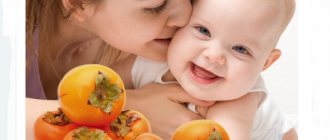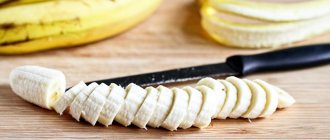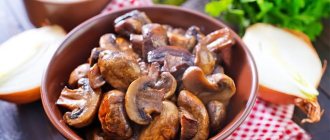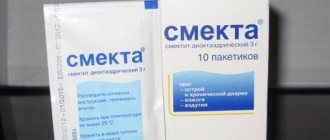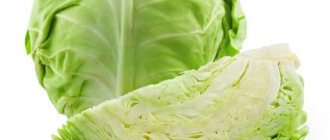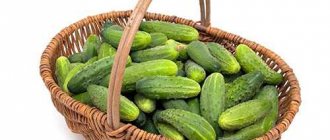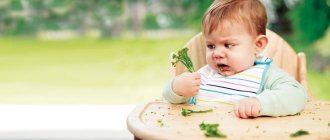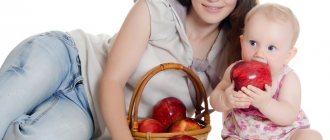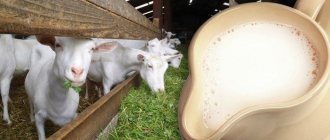Before 7 months, a child should not be introduced to legumes. The learning process should be gradual and gentle: in addition to the well-known consequences, these products can also cause an allergic reaction, and their usefulness is balanced by the difficulty of assimilation. Finally, beans, lentils and peas are included in the menu only at 1.5 years of age.
Why include it in the diet?
Legumes are record holders for the content of vegetable protein, they contain 25%. In vegetarian dishes, it is the protein from legumes (in particular, soybeans) that replaces meat and fish, although this is not entirely fair: in order to turn into complete protein, vegetable protein requires the “accompaniment” of meat or grains. Nevertheless, “solo” peas, beans, beans, and lentils are very nutritious and quickly cause a feeling of fullness. Therefore, pea soup and bean puree are primarily suitable for children with underweight.
In addition to protein, legumes contain a lot of B vitamins, vitamin A, calcium, and magnesium. There is little fat in beans, only about 4%, and it is good because it does not increase, but rather reduces, cholesterol levels in the blood. However, cholesterol is not a problem for children, but for their grandmothers.
One of the most important components of legumes is fiber. It comes in two types: soluble and coarse insoluble. It is the latter that causes flatulence and other problems with the gastrointestinal tract. Coarse fiber, entering the intestines, enhances its peristalsis and causes increased gas formation.
How to submit?
It is no coincidence that adults add all kinds of spices to legume dishes that stimulate the functioning of the gallbladder, thereby improving the absorption of the “difficult” product and reducing the risk of flatulence. But you can’t give children too many spices. Therefore, the second way to reduce problems to zero is to thoroughly grind the legumes to a homogeneous consistency. The more tender the puree, the easier the body will accept coarse fiber, the less consequences there will be. Chewing food thoroughly can also prevent increased gas formation.
Like any complementary food, legumes are introduced as an introduction in microdoses - 1 tsp, with a gradual increase in the dose to 50-70 g per day over the course of a week.
What to combine with?
It is best to combine legumes with other vegetables - carrots, potatoes, herbs, turnips, tomatoes - for example, in multi-ingredient vegetable purees, stews or soups. Beans go well with any type of meat and grains.
Children over 2-3 years old can be given tender peas; their quantity (as with any other canned vegetables) should be minimal. You need to carefully monitor your child while eating, since small peas are easy not only to play with, but also to choke on.
Instead of the usual and “boring” peas and beans, you can offer your child exotic lentils or yellow “tailed” chickpeas, from which you can make a tasty and nutritious paste for sandwiches.
How to cook?
Ready-made jarred purees already have the required consistency. Other legumes require long soaking before cooking. It is best to soak beans, lentils or dry peas overnight (up to 10 hours). The longer the soaking, the less time it will take to cook. The water, of course, needs to be drained and boiled in clean water. Cook the beans for about 2 hours.
The skin of beans and beans is tough and thick. To make it softer, you need to cook them in unsalted water.
The finished fruits are crushed in a blender. For very young children, choose not ripe fruits, but green beans and milky fresh peas.
For children over 1.5 years old, you can add a little cumin or dill seeds to their dishes.
Ready purees
Mono-component puree “Green peas”, Gerber (from 7 months)
Green bean puree “FrutoNyanya” (from 8 months)
(“My little one”, No. 11, 2008)
This is a leader among legumes and an ideal product for vegetarians. 40% of it consists of proteins, whose valuable qualities are not inferior to proteins of animal origin. It contains potassium, phosphorus, calcium, magnesium, sodium, iron, as well as a number of vitamins: beta-carotene, E, B1, B2, B6, D, which will ensure visual acuity, proper development of the skeletal system, and skin elasticity. Folic acid has a positive effect on mental activity. Soy contains a minimum of “calorie” carbohydrates and a lot of healthy sugars used by intestinal bifidobacteria as a source of nutrients. Thus, soy reduces the risk of dysbiosis.
In addition, these sugars facilitate bowel movements and remove heavy metals from the body. Switching to infant formula and soy-based products is recommended for cow's milk protein intolerance, lactase deficiency, and diabetes.
Its protein is easily digestible and includes vital amino acids, vitamins B1, B2, B6, K, PP, C, carotene, as well as iron, calcium, phosphorus, potassium, magnesium, sodium, iodine. In terms of copper and zinc, beans are superior to most vegetables. It has a diuretic and antimicrobial effect. The sugar-lowering effect of beans is used for diabetes. And due to its property of enhancing the secretion of gastric juice, it is included in the diet of children suffering from gastritis with low acidity. Keep in mind that despite our usual perception of beans as a side dish, they are absorbed much better with vegetables than with animal protein.
Good beans have intact, shiny grains that are uniform in color and size.
GREEN PEA
The fruits of this plant contain B vitamins, carotene, vitamins C and PP, iodine, folic acid, salts of iron, calcium, potassium and phosphorus, magnesium and selenium. Young peas have a mild diuretic effect and create an alkaline environment in the stomach, which is useful for gastritis with excess secretion. It is also capable of blocking the entry of a number of radioactive metals into the body. For anemia, it is useful to give children, starting from 3 years old, 3-4 tables. spoons of young peas daily.
Good pea grains are large, almost the same size, and their color is white, yellow or green. Peeled peas, the grains of which are split in half and partially removed from the shell, contain less coarse fiber, cook quickly and are suitable for small children.
(“Mom, it’s Me!”, No. 11, 2008)
LENTILS
In lentils, the size of the grains, as well as the green color, are valued.
Legumes are very nutritious, healthy and rich foods. However, they are quite heavy for the infant’s still fragile digestion. Therefore, pediatricians do not advise introducing beans, peas and legumes into the baby’s diet too early. In this article we will look at the age at which beans can be given to a child.
Types of legumes
Such products effectively combine the beneficial properties of meat and vegetables and contain large amounts of protein, which gives the child a lot of strength and energy. They give you a feeling of fullness for a long time. These products contain various vitamins and minerals, including magnesium, phosphorus and calcium, sodium and iodine, zinc and copper.
Legumes have a diuretic effect and remove toxins and excess fluid from the body. They eliminate harmful bacteria and germs. And after heat treatment, products retain up to 80% of their nutrients. The most common types of legumes are peas and beans.
Peas contain vitamins C and group B, folic acid, iron and magnesium, carotene, selenium and other useful elements. It strengthens bones and teeth, stimulates and develops brain function, replenishes expended energy and relieves fatigue, and accelerates metabolism. From how many months can you give peas to babies, see.
Soy and lentils are used less frequently in baby food. Although they also contain a large amount of useful vitamins and elements, they include protein on a par with meat and are well absorbed. Soy contains vitamins E and D, group B, sodium and magnesium, calcium and phosphorus, and iron. Soy ensures proper development of the bone skeleton, increases and maintains visual acuity, and improves skin elasticity. In addition, it activates brain functionality and improves intestinal function.
Lentils contain magnesium and iron, B vitamins, which have a positive effect on the functioning of the heart, blood vessels, and nerve cells. It is an environmentally friendly and safe product, as it does not accumulate harmful compounds. However, let us dwell in more detail on beans, since they are often included in the diet of infants.
Nutritional value of legumes? Soybeans, beans, green peas
In the Old Testament there is a story about how several young men who lived in captivity at the court of Nebuchadnezzar were obliged to taste delicacies and wine from the king's table. One day they were released from this duty, and after ten days of eating beans, vegetables and water, these youths looked better than their peers who did not abstain from rich food and wine. This is not surprising, because legumes can heal, rejuvenate and strengthen the body. Just look at their composition.
Soy in child nutrition.
This is a leader among legumes and an ideal product for vegetarians. 40% of it consists of proteins, whose valuable qualities are not inferior to proteins of animal origin. It contains potassium, phosphorus, calcium, magnesium, sodium, iron, as well as a number of vitamins: beta-carotene, E, B1, B2, B6, D, which will ensure visual acuity, proper development of the skeletal system, and skin elasticity. Important elements such as choline, biotin, folic acid have a positive effect on mental activity. Soy contains a minimum of “calorie” carbohydrates and a lot of healthy sugars used by intestinal bifidobacteria as a source of nutrients. Thus, soy reduces the risk of dysbiosis. In addition, these sugars take an active part in the functioning of the gastrointestinal tract, facilitating bowel movements, and remove heavy metals and radionuclides from the body. Switching to infant formula and soy-based products is recommended for intolerance to cow's milk proteins, lactase deficiency, and diabetes.
Beans in child nutrition.
It is superior in taste to peas and lentils. Its protein is easily digestible and includes vital amino acids, it contains vitamins B1, B2, B6, K, PP, C, carotene, as well as iron, calcium, phosphorus, potassium, magnesium, sodium, iodine. In terms of copper and zinc, beans are superior to most vegetables. It has a diuretic and antimicrobial effect. The sugar-lowering effect of beans is used for diabetes. And due to its property of enhancing the secretion of gastric juice, it is included in the diet of children suffering from gastritis with low acidity. During processing, the loss of nutrients is not significant: it has been established that canned beans retain up to 70% of vitamins and up to 80% of the original minerals. Keep in mind that despite our usual perception of beans as a side dish, they are absorbed much better with vegetables than with animal protein.
Green peas in a child's diet.
The fruits of this plant contain B vitamins, carotene, vitamins C and PP, iodine, folic acid, salts of iron, calcium, potassium and phosphorus, magnesium and selenium. Young peas have a mild diuretic effect. By creating an alkaline environment in the stomach, it brings relief from gastritis with excess secretion. Green peas can also block the entry of a number of radioactive metals into the body. It is useful for children with anemia to be given, starting from the age of three, 3-4 tbsp. spoons of young peas daily.
Composition and beneficial properties of beans
The composition of beans includes proteins and fats, carbohydrates and proteins, fluorine and iron, iodine and copper, zinc and manganese, phosphorus and potassium, sodium and calcium, magnesium and other minerals. It contains vitamins E, C and PP, group B. Due to this composition, the product is very healthy and at the same time dietary. By the way, in terms of protein content it is second only to meat.
Beans perform the following beneficial functions:
- Restores and regulates material metabolism;
- Promotes the harmonious growth and development of children;
- Saturates the body with energy, vitamins and nutrients, eliminates stress and fatigue;
- Removes heavy metals, toxins and other harmful elements from the body;
- Increases the production of gastric juice, improves digestion;
- It has a diuretic effect and removes excess fluid, cleanses the body, eliminates swelling and helps with kidney stones;
- Kills harmful bacteria and organisms, strengthens the immune system, saturates cells with oxygen;
- Lowers blood sugar levels, promotes the formation of hemoglobin and helps with diabetes;
- Prevents the development of anemia and tuberculosis.
Harm of beans
However, pediatricians do not recommend introducing this product into the diet of infants and nursing mothers too early. It increases gas production, slows down bowel movements and can cause constipation. Legumes are difficult and slow to digest. By the way, white beans are easier to digest and cause less flatulence than red beans. And the safest and most suitable for children are green beans.
To avoid causing flatulence and constipation, it is recommended to soak the product in a soda solution for two or more hours before cooking, and then boil it thoroughly. You can also add gas-reducing ingredients to your bean recipe. These are dill, buckwheat and millet cereals, baked vegetables and boiled meat.
In addition, beans are not recommended for use in case of colitis and high acidity of the stomach, gastritis, ulcers and gout. Legumes should not be eaten raw, otherwise serious intoxication will occur! Let's take a closer look at how many months children are given legumes.
At what age can beans be given?
Green beans can be given as early as 8 months. Boil or steam the product and pass through a meat grinder. Add a little vegetable broth and stir or beat with a blender. Do not add salt, pepper or other spices! You can add a few drops of vegetable oil for taste.
For the first time, give your baby half or a whole teaspoon of bean puree and observe the baby's reaction. If an allergic reaction or stomach problems occur, delay administration. If necessary, consult a doctor. If there are no complications, you can sometimes give your baby green legumes along with vegetable purees. In one year, you can prepare green bean soup for your child. Such dishes are given to children no more than twice a week. You can also buy ready-made baby purees.
Mature legumes, including white and red beans, are not recommended for children under two or three years of age. At first, thoroughly boil and puree the product, use it for making soups and purees, do not give it separately. First introduce peas, and after a week - beans. At the same time, the daily norm of legumes should not exceed one hundred grams, and the weekly norm – two hundred.
Do not give canned beans to children under three years of age! They contain dangerous preservatives and chemical additives that can harm the baby's delicate stomach and cause severe poisoning or allergies. A complete list of products prohibited for children under three years of age can be found here.
How to cook beans correctly
- To prepare green beans, rinse the product, cut off the stems and soak in cool water for ten minutes. Then add plenty of water and bring to a boil. You can add a little salt at the end;
- To cook mature legumes, soak the product in cool water for three to four hours, then simmer uncovered in plenty of water at a high boil. At the end, the dish is salted, mashed and mixed with vegetables or pieces of boiled meat;
- Do not combine beans with other legumes and foods that are slow and difficult to digest! After two or three years, you can prepare salads, casseroles, stews and cutlets for children, as well as cook soup from canned beans;
- For cooking, choose grains of the same size, without damage or dents, black spots or spots. They should be large, shiny and evenly colored.
Beans and peas are hypoallergenic foods
Legumes belong to the hypoallergenic group of products, so they are suitable for almost any child. Many modern baby food manufacturers produce food for little ones, which combine green peas, green beans, young green beans with meat or offer them in their pure form. You can prepare puree yourself for a child from 8 months of age, and feed them in jars a little earlier.
Are peas bad for children?
There is an opinion among mothers that you should not give peas and beans to your child: supposedly, they cause increased gas formation. But that's not true. It is enough to follow a few rules so that the child tolerates such a dish well.
Use only the youngest fruits, the so-called “green” ones, and only fresh or frozen. Mature legume nutritionists recommend using them in the diet of children after 2 years of age, but giving them occasionally and only in the form of pureed soups, since they are difficult to digest. Dry, as well as canned peas and their cousins are not suitable for children under 3 years of age!
How to cook green peas for a child
. At the beginning of complementary feeding, it is better to use peas and beans as a small component for soups and purees, giving the child the opportunity to get used to the new taste, and his tummy to learn to digest the new product.
Before cooking, remove foreign impurities and spoiled grains from legumes, rinse thoroughly, and soak in cold boiled water for no more than 3-4 hours.
Cook legumes properly: cook in plenty of water, at a vigorous boil, and uncovered. You need to add salt at the very end of cooking.
Raw peas and beans are harmful to children
. Do not let your child try raw fruits: they contain toxic components that are destroyed during heat treatment.
Bean recipes for children
Green bean casserole
- Green beans – 200 grams;
- Broccoli – 200 grams;
- Chicken eggs – 4 pieces;
- Grated hard cheese – 200 grams;
- Milk – ½ cup.
Prepare the beans, chop them along with the broccoli and boil for five minutes. Beat eggs with milk, salt to taste. Place vegetables on a baking sheet, sprinkle with grated cheese and pour egg mixture on top. Bake in the oven for 15-20 minutes at 180 degrees. To make the casserole more filling, add pieces of chicken or turkey fillet to the recipe.
Cream soup with beans
- White grain beans – 300 grams;
- Onion – 1 head;
- Flour – 1 tablespoon;
- Butter – 100 grams.
Pre-soak the white beans, then drain the water and add 1.5 liters of liquid. Bring to a boil, cook uncovered for 50 minutes. After this, pour half the water into a separate bowl and puree the cooked beans. Peel and finely chop the onion, lightly fry in vegetable oil, mix with bean puree and pour in the remaining broth. Cook until boiling and add butter. You can add chopped fresh herbs to the finished creamy bean soup and complement the dish with croutons.
Light soup with green beans
- Vegetable broth - 2 liters;
- Green beans – 200 grams;
- Potatoes – 3 tubers;
- Carrots – 1 piece;
- Onion – 1 head;
- Bay leaf – 1 pc.
Soak the beans and peel the vegetables. Finely chop the onion and lightly fry in a frying pan with vegetable oil. Grate the carrots and add to the onion, fry for another two to three minutes. Cut the potatoes into cubes, add them to the broth along with the beans and fried vegetables, and cook for 15 minutes until the potatoes are ready. At the end, add bay leaf, a little salt and let it brew. When you can start feeding your baby soups, read this article.
By the end of the first year of life, the baby gradually switches from breastfeeding or artificial feeding to the “adult” table. This means that his diet now contains the following main food groups:
- meat;
- vegetables;
- cereals;
- fruits;
- dairy dishes.
Among the vegetables, legumes are distinguished. They are considered to be difficult for a child to digest and absorb in the gastrointestinal tract. Let's consider at what age you can give your child beans, peas or other “related” crops.
The legume family is the leader among plants in protein content. Therefore, this group of products is loved not only by people with low financial income, but also by those who consciously refuse meat: vegetarians and vegans.
The absolute leader in the amount of protein is soy.
In East Asian cuisine, it is widely used in the form of analogues of meat, butter, milk and cheese.
On the Russian market, soybeans and products made from it are less popular than beans, peas and lentils. Beans are a source of nutrients:
- fats;
- carotene;
- potassium;
- phosphorus;
- copper;
- zinc;
- B vitamins;
- ascorbic acid.
Peas, in addition to the listed components, are rich in magnesium. Lentils contain almost no vitamin C, but the essential amino acid tryptophan is present in large quantities.
Recipes
Not all children want to eat beans. It is rich in vitamins and microelements, so its consumption will benefit a growing body:
- Casserole with green beans. Ingredients: green pods (200 grams), half a glass of milk, one egg, cheese (150 grams). Preparation: chop the beans, boil for 3 minutes after boiling; Separately beat the egg with milk, add salt; mix everything together, place in a greased baking dish; cook in the oven for 30 minutes; After time, sprinkle with grated cheese.
- Cream soup. Ingredients: one can of canned beans, 500 ml of meat broth, one grated tomato, salt. Preparation: rinse the beans, mix with broth, boil, add chopped tomato, salt, and beat with a blender.
- Soup. Ingredients: chicken meat (300 grams), dry beans (150 grams), one carrot, one onion. Preparation: soak the beans for 3-4 hours; Cut the fillet, add water, bring to a boil, add carrots, onions, beans, and salt. Cook for an hour. The soup can be given to babies up to one year old.
All recipes are simple and quick to prepare, which will give mom more free time.
Suitable age
Peas, beans and similar crops are not introduced into the diet of a child under 12 months for the following reasons:
- the protein of these plants is difficult to digest;
- legumes cause increased gas formation, and in large quantities – constipation;
- risk of an allergic reaction.
If the likelihood of a true allergic reaction to beans is low, then digestive problems are common. If you develop an allergy to any new food product, you should immediately seek the help of a specialist.
Here are the symptoms to alert parents:
- bright pink or red rash;
- the appearance of mucus or blood in the stool;
- swelling of the lips, tongue, ears, eyelids or face in general;
- difficulty breathing;
- extremely rarely - nasal congestion in combination with lacrimation, redness and itching of the eyes.
Is it possible to eat beans while breastfeeding a baby?
A nursing mother can include this vegetable in her menu. But this must be done gradually, and only if allergic reactions have not previously occurred in response to its consumption. Beans are an amazing and healthy plant, and you shouldn’t neglect them while breastfeeding. By consuming this product, beneficial substances enter the body. This will improve the quality of milk and increase the woman's immunity. A nursing mother will feel freedom and experience all the delights of natural breastfeeding.
The introduction of beans into the diet of children, like any other new product, should be done gradually. Start with small portions. Parents should remember that children can develop an allergy to beans. After offering a small portion, you need to monitor the child’s condition. If any manifestations occur in the form of redness, itching, or rash, then it is better to avoid using this product.
Green beans for children are offered at 7-8 months, but not in their pure form, but as part of soup or vegetable puree.
How to properly introduce beans into your diet
Like any product, beans are introduced into the menu for children gradually. As the first legume dish, the baby is offered a monocomponent green bean puree: literally half a teaspoon. Every day the dose of puree is increased, bringing it to 80-100 g per day. When the daily portion exceeds 40-50 g, green bean puree is combined with dishes from other vegetables so that the child does not receive a large portion of legumes at one time.
In second place after green beans comes young peas of brain varieties.
It is also pureed and added to other vegetables.
From the age of two, the baby’s diet can include mature legumes, “adult” peas and beans. Before cooking, it is recommended to soak them for 3-4 hours and cook over high heat, without covering them with a lid, so that they steam as much as possible. They usually prepare porridges and soups and offer them twice a week. Kids usually love bean soup and eat it with pleasure.
If gas formation or constipation is noted in a child after the introduction of beans, special exercises must be performed to alleviate the baby’s condition:
- Starting position – lying on your back.
- Press your knees together towards your chest 10 times.
- Press your knees to your chest one at a time, 10 times each.
- Stroke the abdomen clockwise with soft, gentle movements, alternating them with point pressure.
- Make a “waterfall”: stroke your tummy from top to bottom with both hands, alternating them.
These exercises stimulate the functioning of the large intestine, which will help improve bowel movements and gas discharge. Warmth also helps with the feeling of bloating: you need to wrap the baby’s tummy with a cloth warmed on a radiator or ironed.
Popular recipes
We offer several recipes for preparing bean dishes:
Bean soup with vegetables
Ingredients:
- chicken breast – 1 pc.;
- beans – 1/3 cup;
- potatoes – 2 pcs.;
- carrots – 1 pc.;
- pasta (noodles or baby) - 1/3 cup.
The beans are soaked overnight in cold water so that they soften and swell, and then their cooking time will be reduced.
Boil the second chicken broth. To do this, put the chicken in cold water, put the pan on high heat, let it boil, carefully skimming off the foam. Then remove the meat, pour out the broth or use it for an “adult” dish, wash the pan and pour cold water over the meat again. Add the soaked beans here and cook until their grains “spread”. When the beans are ready, add chopped potatoes and carrots to the boiling broth and cook until they are ready. Add pasta and cook for another 5 minutes. At the end of cooking, add a little salt.
If the preparation of the dish is intended for a child with chewing teeth that are still missing, before adding pasta, you need to catch the vegetables from the broth, mash them with a fork and return them to the soup. Boiled meat can be minced or finely chopped with kitchen scissors.
Green bean soup
Ingredients:
- chicken breast – 1 pc.;
- carrots – 1 pc.;
- green beans – 5-7 pcs.;
- potatoes – 1 pc.;
- oatmeal for children - 1 tbsp.
Prepare the second chicken broth as described above. Place chopped vegetables and oatmeal in a boiling pan and cook for about 7 minutes until tender. For children under 18 months, chop vegetables with a blender or mash with a fork.
Thus, beans, peas and other legumes are an important component of the diet of babies over 12 months. By following the basic rules for introducing complementary foods and recommendations for handling legumes, parents will be able to easily introduce the baby to new delicacies.
How to get rid of stretch marks after childbirth?
This is explained by the fact that peas, beans and lentils are quite difficult for the digestive system and the developing body may not be able to process them. So at what age can children be given legumes safely and what are the benefits of them?
Delicious pea soup recipes
Peas are healthy on their own. But to make the soup tasty and rich in vitamins, you need to add other vegetables and meat to it.
Cream soup
To prepare this soup you will need one carrot, one onion, peas - 200 g and a spoon of butter. If peas are used dried, they must be soaked overnight. Cooking method:
- Once the carrots and onions are chopped, they are placed in a small frying pan with butter. Vegetables should be simmered a little. But don't fry!
- Then the vegetables are placed in a pan with peas, filled with water and placed on the stove. Instead of water, you can use vegetable or chicken broth.
- After the soup is ready, grind it with a blender.
Yum Yum Soup
To prepare this soup you will need three medium-sized potatoes, 500 g of chicken, one onion and carrot each, 200 g of peas. The peas should be pre-soaked. Cooking method:
- First, cook the chicken broth.
- Then remove the chicken and add peas to the broth. Boil for an hour.
- Next add potatoes, carrots and onions. Carrots and onions can be lightly simmered in a frying pan. Cook for another 20 minutes.
- 10 minutes before cooking, return the meat to the pan.
This soup goes well with homemade white bread croutons.
At what age can a child have pea soup? Whether it will be at two years old or later, only the mother will decide. She knows better the baby’s taste preferences and the characteristics of his body. It is important to monitor your child’s reaction to a new dish. If he eats with pleasure, then you should continue feeding. In the case when the baby turns away and does not want to eat, it is better to wait a little and offer him pea soup at a later age.
Peas are considered a nutritious and tasty food. The most popular dishes made from it are porridges, purees and soups. This legume crop is a valuable source of vegetable protein, fiber and many vitamins. In this regard, many young mothers have a question: when can babies start giving pea soup or porridge? How to properly introduce these dishes into a child's diet? What recipes should you prefer to prevent your child’s tummy from bloating from eating peas?
As you know, peas can cause bloating and colic in a baby, so how can you give them to your child correctly and avoid these consequences?
What beneficial substances do legumes contain?
Legumes are as healthy as meat and vegetables. They are rich in fiber and protein and provide a long-lasting feeling of fullness. Let's look at common types of legumes in more detail.
- Beans .
Contains many microelements, including copper, phosphorus, iron, zinc. It is very important that after heat treatment up to 2/3 of all useful substances are retained. Diuretic and antimicrobial properties have been observed when beans are consumed by children. At what age to give this product, we will consider a little later. - Peas .
Rich in vitamins C and B, iron, folic acid, magnesium. Very important components are starch, vegetable fat, fiber, enzymes. These legumes contain almost the same amount of amino acids as meat. - Soy.
Helps the child’s teeth and skeletal system form correctly. It contains carbohydrates that are beneficial for the intestines. These legumes are a source of vitamins D, B, E, B, phosphorus, and calcium. They contain specific fatty acids that support the normal functioning of the circulatory system. - Lentils .
Supplies the child's body with iron and magnesium. Like all other legumes, lentils contain B vitamins, as well as omega-3 and omega-6 polyunsaturated fatty acids.
However, despite such an abundance of useful substances in the composition, legumes should be introduced into the diet of children with caution, as they can cause increased gas formation. This statement is especially true for ripe fruits.
From the history of legumes
Peas, beans, beans, soybeans, and lentils have long become familiar on our table - people have been cultivating them for more than 5 thousand years.
In Russia, beans, beans and peas gained well-deserved popularity at the beginning of the 18th century. Our ancestors noticed: legumes give energy, allow you to do without meat, and are very popular with children. Beans came to us from South America, peas from Afghanistan and India. Soybeans began to be actively grown in our country only towards the end of the 19th century, after the World Exhibition in Vienna. Contents of the article:
Acquaintance with beans occurred due to the fact that they were brought to the mainland by Columbus. At first it was used only for cultivation as an ornamental plant. Then they began to eat it. The plant contains useful substances necessary for the body. If we compare the nutritional value of beans, they can be placed next to meat. It differs only in that it contains only 2% fat. Many parents do not mind at all if beans are present in their child’s diet.
At what age can a child be given legumes?
At what age should children be given beans and other legumes? Young green beans can be gradually introduced into the diet from 8-9 months. It is advisable at the first stage to use industrially produced products, as they have a more uniform consistency, which is ideal for the baby’s digestive system. You should start complementary feeding with legumes with half a teaspoon and gradually increase the portion. Usually, when legumes are introduced into a child’s diet, he is already familiar with cereals and vegetables. This allows you to create a puree from 2-3 components. Legumes give the dish a pleasant aroma and rich taste. It is allowed to replace an entire feeding with this product no earlier than when the child is one and a half years old. Combining legumes with meat is not recommended, as their nutrients are poorly absorbed along with animal proteins. After two years, you can feed your child mature beans, but they are still best offered as part of vegetable soups or purees. Only red lentils are allowed to be used for baby food. However, previously we were talking exclusively about healthy children. If there are any deviations in the state of health, then the question of at what age a child can be given beans, lentils, soy and other legumes should be decided individually, taking into account the recommendations of the pediatrician.
Is it possible to give beans to a small child?
Beans are simply a storehouse of useful micro- and macroelements, but they should not be given to children from an early age. The product increases gas formation in the intestines. Therefore, if a child suffers from gas, treat this product with caution.
In addition to increasing gas formation, beans are also difficult for the stomach to digest. But this only applies to ripe fruits. Green young beans are absorbed well by the body and are not such a heavy food as ordinary beans.
Green beans are given to children from 10 years of age, and if there are problems with the digestive tract, then from one year. At this time, the child’s body is already able to accept such food. You can even say that green beans are simply necessary for a child, because they contain so many useful and nutritious things. Give it 1-2 times a week, including it in purees or preparing a light soup from it. You can simply steam the beans, add a little salt, grind them into a paste and feed it to your baby.
But ordinary mature beans are given to children only after two years, and then in small quantities and not every day. This limitation is explained by the fact that mature beans are difficult to digest food and it is difficult for a child’s body to digest it. Therefore, if the baby is already two years old or even older, then you can gradually include mature beans in his diet, but do this carefully, monitoring the intestinal reaction.
If you notice that after your child ate beans, he began to experience severe bloating or colic, then stop taking it and return to young green beans. This means that your baby’s body is not yet ready for such heavy food. Although nutritionists allow the inclusion of mature beans in the diet of children from the age of two, we all understand that each person’s body is individual and sometimes there may be exceptions.
Who knows how the fate of beans might have turned out if Columbus had not one day brought them to the mainland - this happened only in the 16th century. At first it was grown mainly as an ornamental plant; they began to prepare hearty and tasty dishes from it later - in the 17th century. This type of legume contains a full range of useful substances necessary for humans. In terms of nutritional value, beans are comparable to meat, the fundamental difference is that they contain only 2% fat. Of course, it must be in the diet of children, and we will tell you at what age it should be included in the menu, how to prepare it, and which children it is contraindicated for.
How to cook legumes correctly?
Before cooking, beans should be carefully sorted, removing debris. Then they need to be washed well and soaked for 3-4 hours in boiled water. It is recommended to boil legumes uncovered in plenty of water. You need to add salt at the very end. You can offer your child ready-made legumes in the form of puree or make them into balls. It should be remembered that you need to grind the cooked beans immediately, before they cool down, otherwise lumps will appear in the thick mass. You can add a little butter to your dishes to give them a milder taste. It is better for your child not to eat raw legumes, as they contain toxic components.
This might be interesting
A fontanelle is a small area on the baby’s head that looks like a soft skin membrane and is formed at the junction of the skull bones. At birth, a child has two fontanelles: small,...
Many mothers are happy to eat legumes themselves, but are afraid to introduce them into their son or daughter’s diet, believing that these products will harm the child’s delicate digestive tract. They doubt whether a one-year-old child can be given peas, lentils and beans, and they often do not know what dishes are prepared from legumes for the children's menu. Let's dispel fears and clarify when it is permissible to introduce soy, peas and other legumes into children's diets.
Legumes in baby food: health benefits
Of all plant products, legumes deservedly occupy a leading position in the content of vegetable protein - a nutrient that a growing body so needs. Proteins contain essential amino acids that promote the absorption of minerals and participate in metabolic processes - they can only be consumed by the body with food. Of course, plant proteins cannot replace animal proteins in baby food, but they must be present on the menu.
Legumes are also characterized by high nutritional value - the complex carbohydrates contained in the products provide a long-lasting feeling of satiety. And the good thing is that they are not stored in fats - carbohydrates are converted into “clean energy”.
Legumes in a baby's diet will become a source of B vitamins - elements necessary for the “stable” functioning of the nervous system and the development of connective and muscle tissues.
Peas, beans and lentils contain many minerals - iron, calcium, manganese. These elements benefit the growing body - they strengthen bones and hair, and participate in hematopoiesis.
To diversify baby food and make your baby’s menu even more healthy, you can introduce the following legume products into his diet:
- Peas
Many children love fresh green peas - they are easy to chew and taste good. A product that has undergone proper heat treatment is easily digested by the baby’s body and does not cause bloating or flatulence. Fresh peas contain vitamins A and C, folic acid, iron, manganese, phosphorus and calcium - a valuable product in baby nutrition. It has a mild diuretic effect and will be useful for gastritis and anemia. Only green pea pods should not be given to children under 3 years of age - they are poorly absorbed by the baby’s digestive system. This also applies to dried peas - in order for them to become suitable food for a child, they need to be boiled for a long time and crushed to a puree-like consistency. You can also add canned peas to your baby’s menu. But do not forget that the product loses some of its beneficial properties during the cooking process.
- Beans
You can add both dry beans and green beans to the children's menu. It surpasses many vegetables in copper and zinc content. Another quality of beans is especially valuable - even after heat treatment, it retains up to 70% of its nutrients. The product is often included in the therapeutic diet of patients with diabetes and gastritis with low acidity.
- Lentils
Lentils, of all legumes, hold the record for the amount of folic acid in their composition - it is enough to eat a small handful of the product to replenish the daily requirement of the vitamin. The product activates the metabolism in the child's body and helps strengthen the immune system. Lentils cook much faster than beans and dried peas - after soaking them overnight, they will be ready after 30 minutes of cooking.
Soybeans are less likely than other legumes to cause allergies. But do not rush to introduce it into your baby’s diet too early - the product contains substances that interfere with the absorption of proteins and slow down the absorption of calcium by the body. But if you follow the “dosages” and prepare soy correctly, it will also bring benefits - cleansing the intestines of toxins, strengthening bone tissue and muscles, improving mental activity, strengthening the immune system. Pediatricians often recommend switching babies with lactose intolerance and diabetes mellitus to soy-based infant formulas.
Pediatricians advise not to rush into introducing legumes into your baby’s diet. A child’s fragile digestive system may not be ready for such “heavy” foods - they contain a group of carbohydrates that are poorly absorbed by the child’s body. Flatulence, constipation, increased gas production - these are the unpleasant consequences that can be expected if you start giving your child peas, beans or lentils too early. In addition, legumes often cause food allergies. Even soy, which is considered a hypoallergenic product, is no exception - some children react poorly to it.
Legumes begin to be introduced into baby food from fresh peas when the baby is 8-10 months old. The first dish will be pea puree - add 100 g of peas to a glass of boiling water, cook for 15 minutes over low heat, drain the broth, grind the peas in a blender, adding a little boiled water. Let your child try half a teaspoon of the prepared puree first. Every 3 days, if the baby’s body has “accepted” the new product well, you can increase the amount of complementary foods by 5 g. The maximum dose of fresh pea puree for a baby under 1.5 years old is 30-50 g at a time.
Introduce the rest of the legumes into the diet of a small child only from 1.5 years. Add to your baby’s menu if he is not allergic to the product, beans and lentils. The maximum daily dose of legumes for children 1.5-3 years old is 70-100 g at a time. Pediatricians do not recommend giving your baby legume-based meals more than once every 3 days. And this is even provided that the child’s body accepts the product well.
To ensure that legumes in a baby’s diet only bring health benefits, mothers should follow certain rules when cooking them. A couple of hours before cooking, you should soak dry beans or peas. The product should only be placed in boiling water and cooked over high heat - do not cover the pan with a lid. If you are preparing a dish with vegetables, add them closer to the end of cooking. Salt the beans and peas a couple of minutes before they are ready. Cooking time for legumes will depend on the specific product - be sure to read the manufacturer's recommendations on the package.
A child’s diet may contain the following legume-based dishes:
- Puree soup with green peas - from 1.5 years
You will need the following ingredients - 2 potatoes, 1 carrot, 1 tbsp green peas, 2 tbsp. l low-fat sour cream, a bunch of fresh parsley, salt to taste. Peel the carrots and potatoes and cut them into cubes, add them to 1-2 liters of boiling water, and cook a little over high heat. Add green peas, reduce heat and cook until tender. Remove the soup from the stove, cool slightly, add sour cream and finely chopped parsley, blend in a blender.
- Omelet with green beans - from 3 years
Boil 0.5 tbsp of young green beans until tender. Beat 1-2 eggs with 1 tsp flour, 2 tbsp. l milk. Heat a frying pan greased with olive oil, place the beans on it, and then the omelette mixture. Cook the dish covered.
- Bean pate - from 3 years
To prepare the pate, take 2 tbsp. l cooked beans. Grind it with pre-fried onions (1 tsp). add 1 tsp olive oil, 0.5 tsp lemon juice to the dish. Serve the pate with whole grain bread.
- Bean soup with vegetables - from 3 years
Boil 50 g of white beans until tender. Wash and finely chop the vegetables - 1 potato, half an onion, 1 carrot. Let the vegetables boil in 3 cups of water. When the vegetables are ready, add the cooked beans to the water and keep the soup on low heat for another 5 minutes. Add finely chopped parsley to the finished dish.
Whatever recipe you use to prepare legumes, do not forget the main rule - do not combine them with meat! For a child’s digestive system, this combination will be a real “test.” Vegetables are the best addition to legume dishes.
Guest post. Dear readers, hello! Today I would like to talk about how in a year I managed to normalize my weight and significantly improve my health. You will learn from the article how to maintain health for many years by taking 15 steps to normalize your diet, physical activity, and changing your attitude towards the world around you and towards yourself in this world. I had to process a large amount of information and experience for myself the most effective, from my point of view...
Hello, dear readers! Almost every mother dreams of feeding her baby breast milk for as long as possible. At the same time, no one canceled the desire to have flawless breasts. Yes, after giving birth, your figure has changed a lot and now you just need to carefully select your underwear, not only for aesthetic beauty, but also for your convenience and comfort. If you don’t do this, it will be more difficult for you to get in shape...
Dear friends, hello! Our wise grandmothers teach: “Raise a child as long as it fits across the bench. When it goes down, we’ll have to re-educate.” But how and when to do this if the baby is not yet able to understand adult reasoning about what is good and what is bad? The role of the family in raising a child is very important! A child must be educated from birth, because some bad habits start in diapers! Brief…
Hello mommies! Do you already know how to find time for yourself during maternity leave and not have to look for a minute to take a shower? Do you want to develop and continue your career, starting from the first days of returning home from the maternity hospital, while remaining a caring and attentive mother? Sit back, take a cup of aromatic tea and read carefully. Today I will tell you in detail about storing breast milk in the refrigerator. This will help you free up a lot of time...
Hello, my dear readers. Little children love to run: at home, on the street, at school, in kindergarten. When a child moves so quickly, he sweats and is constantly thirsty. In order to prevent dehydration in the baby, every mother must know how much water the child should drink. In a baby's body, metabolism is faster than in adults, which contributes to thirst. How much water should a child drink:...
Read more
Many mothers are happy to eat legumes themselves, but are afraid to introduce them into their son or daughter’s diet, believing that these products will harm the child’s delicate digestive tract. They doubt whether a one-year-old child can be given peas, lentils and beans, and they often do not know what dishes are prepared from legumes for the children's menu. Let's dispel fears and clarify when it is permissible to introduce soy, peas and other products from this group into children's diets.
Benefit
Legumes contain a large amount of protein
, as well as fiber, thanks to which they combine the advantages of meat and vegetable dishes. Soybean is considered the most valuable legume in terms of protein content. It is recommended if it is impossible to consume meat or milk, for example, with lactase deficiency.
Legumes contain a lot of vitamins
. In particular, soybeans contain a lot of beta-carotene, vitamin D, choline, biotin, folic acid, vitamin E and B vitamins. Beans and green peas contain a lot of vitamins C, PP, group B, vitamin K, carotene.
Legumes are also a source of mineral compounds
. From beans, the child will receive copper, zinc, iodine, calcium, magnesium, iron and other minerals. Peas are a valuable source of selenium, magnesium, calcium and iron salts, phosphorus, iodine and potassium.
In addition to B vitamins, lentils contain healthy omega fats, magnesium and iron.
.
Legumes are actively involved in the digestive system
. Their use increases the production of gastric juice and facilitates bowel movements.
Lentils are called an environmentally friendly product
, since such a legume does not accumulate harmful compounds and can be safely consumed by children.
Beans have antimicrobial, sugar-lowering and diuretic effects.
Eating green peas helps prevent anemia.
Peas, soybeans, beans and other legumes are considered hypoallergenic foods
.
Eating legumes helps remove radionuclides, heavy metals and other harmful substances from the human body.
Benefits of beans
The energy value of boiled beans is 123 kcal per 100 g of product. The protein content in this amount is 7-8 g. There is a fairly wide list of diseases for which beans can make certain positive adjustments:
Diseases of the heart and blood vessels.
Heart rhythm disturbances.
Beans can lower blood pressure. Therefore, it can be safely recommended to hypertensive patients.
The vegetable can improve the condition of damage to the nervous system.
The richness of the protein composition will ensure rapid recovery from injuries.
Beans contain arginine, which activates the production of urea. It is necessary to improve metabolic processes and acts as a blood sugar regulator.
With the consumption of beans, the functioning of the respiratory organs improves. In this regard, beans are recommended for people with tuberculosis in the body.
Beans help correct metabolic processes. Therefore, it is included in many diets.
The vegetable contains a lot of zinc, which helps normalize carbohydrate metabolism. Copper, in collaboration with vitamin substances included in group B, helps increase hemoglobin levels. In addition, adrenaline increases its production.
Beans help cleanse the skin, improving its appearance.
At what age can it be given?
Green peas and green beans can be introduced into complementary foods for babies along with other vegetable dishes, including them in multi-component vegetable purees and pureed soups. This can be done from 7-8 months of age
.
You can also offer your child ready-made canned purees that are approved for his age. At the same time, it is recommended to include legumes in the children's menu no more than 2 times a week
.
It is not recommended to prepare dishes from mature legumes for a child until the age of 2, but even at the age of two, such crops are ground and offered only as part of soups and other multi-ingredient dishes.
Children can be given separate dishes made from dry peas, soybeans and beans from the age of 3
in an amount of no more than 100 grams. As for canned legumes, they can also be offered to children over 3 years old.
When to introduce it into complementary foods?
Young beans appear in the diet of an infant along with other vegetable complementary foods. This green vegetable can be offered to a baby at 7-8 months by making a single-component puree from it or adding a small amount of young vegetables to other vegetables (making a multi-component puree). Green beans can also be found in ready-made jarred purees.
Dry beans are not recommended for use until at least 2 years of age.
For a 2-3 year old child, this type of legume in its mature form should be ground and not given as a separate dish, but included in soups or other dishes with several ingredients. It is recommended to prepare it as a separate dish only for three-year-old children and older children. In this case, the serving volume should not exceed 100 g.
As for the frequency of consumption, dishes from it should be offered no more than 2 times a week.
Pediatricians, including the popular doctor Komarovsky, advise giving canned beans to a child from at least 3 years of age.
Ripe beans are included in the diet of children no earlier than 2 years old, and preferably even later.
Introduction to the diet
You should start complementary feeding with legumes with green fruits (young), including them in small quantities in recipes for vegetable soups or purees. Let the child gradually get used to new tastes, then his gastrointestinal tract will be better able to digest this food.
Over time, you can treat your baby with green pea puree, and after a few weeks - with young bean puree (green beans). For the first test, it is enough to give the baby a teaspoon of this puree, and if the reaction is normal, gradually increase the volume to 30-50 grams.
When to introduce peas to a child?
Green peas can appear in a baby’s diet only from 8 months. It is from this age that the baby’s pancreas begins to produce the necessary enzymes for digesting peas. If you don’t start giving your baby peas, his gastrointestinal tract won’t learn to digest it. Subsequently, every time you give peas, its gastrointestinal tract will react with gas formation, flatulence, and constipation. This happens because the necessary enzymes will not have time to be synthesized in the required volume at the required time.
The first bean dish for a newborn is green pea puree. The delicate consistency will allow the puree to be easily digested and not cause upset. This dish is completely hypoallergenic and can be given to children with a predisposition to allergies. Green pea puree contains pectin (natural) and plant fibers, due to which the baby’s intestinal microflora and stool are normalized. In addition to green pea puree, you can give your baby puree from young pea pods, and after about 2-3 weeks - puree from young bean pods.
Cooking methods
1.
To boil green legumes for your child, they should be washed and soaked briefly (5-10 minutes). To cook, add a large volume of water to the product, bring to a boil and do not cover with a lid. You can add salt to the dish at the end of cooking.
2.
If you are preparing mature legumes for your child, after carefully sorting and washing them, they should be soaked in cool water for 3 or 4 hours. Next, they are also boiled at high boiling in a large volume of water, without covering with a lid, and salt is added to taste at the end of boiling. Next, puree is made from the cooked legumes.
